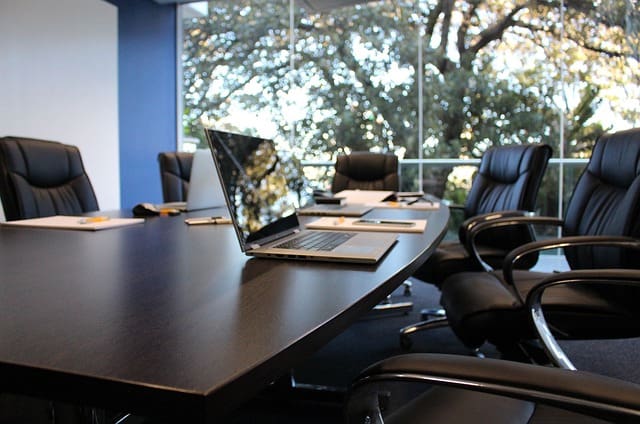In today’s rapidly evolving work environment, the modern office is redefining the way we collaborate, create, and communicate. One prominent trend is the increasing popularity of glass conference rooms—a design choice that not only embodies transparency and openness but also signals a shift in organizational culture. Many companies are carefully considering how glass conference room walls cost can be optimized to create an environment that is both aesthetically pleasing and functionally superior. This blog post will delve into various aspects of modern office design and explore how elements such as flexibility, transparency, sustainability, and collaboration are transforming the workspace.
Designing for flexibility in a dynamic workplace
Flexibility in office design has become essential as businesses adapt to a diverse range of work styles and expectations. With the rise of remote work and flexible schedules, traditional office layouts no longer serve the dynamic needs of modern teams. Instead, innovative designs that prioritize multi-functionality and adaptability are taking center stage.
Key features of a flexible workspace include:
- Modular furniture: Easily reconfigurable seating arrangements and workstations allow employees to transition smoothly between individual tasks and group collaborations.
- Movable partitions: Glass walls and partitions not only provide an open feel but can also be adjusted or removed to create private spaces when necessary.
- Multi-purpose areas: Spaces that serve dual roles, such as casual lounges that double as meeting areas, help in optimizing available real estate.
These elements empower organizations to respond quickly to changes while also supporting the unique needs of their workforce.
Leveraging transparency to boost employee morale
Transparency is a cornerstone of modern office design, and its benefits extend well beyond mere aesthetics. When organizations implement open layouts, including glass conference rooms and shared workspaces, employees are more likely to feel a sense of belonging and mutual trust.
Some of the psychological and practical benefits include:
- Enhanced communication: Open environments facilitate easier interaction, promoting spontaneous discussions that often lead to innovative ideas.
- Stronger team cohesion: Employees gain a better understanding of their colleagues’ roles and contributions, which fosters a collaborative spirit.
- Accountability: Transparent spaces encourage a culture of accountability, as team members are more visible to one another, reducing instances of disengagement.
By strategically incorporating glass elements into office spaces, companies can create an atmosphere that naturally boosts morale and drives productivity.
Incorporating sustainable and energy-efficient solutions
Sustainability is no longer just an option—it’s a necessity. The modern office is embracing eco-friendly design choices that not only reduce energy consumption but also contribute to a healthier and more productive workplace. Sustainable solutions are particularly relevant when integrated with features like glass conference rooms, where natural light plays a significant role in energy efficiency.
Strategies to enhance sustainability include:
- Energy-efficient lighting and HVAC systems: Modern technology allows offices to drastically cut down on energy use while maintaining comfort.
- Recycled and locally sourced materials: Using sustainable materials in construction and decor can lower the environmental footprint of office spaces.
- Green walls and indoor plants: Not only do these add a touch of nature to the workspace, but they also improve indoor air quality and reduce stress.
Integrating these elements into office design helps organizations achieve sustainability goals while simultaneously promoting a healthier environment for employees.
Embracing the future of collaborative workspaces
The future of work is collaborative, and office design is evolving to support this trend. Gone are the days of isolated cubicles and rigid hierarchies; today’s workspaces encourage teamwork, innovation, and fluid communication. The glass conference room is a prime example of this shift—it stands as a symbol of modern collaboration where ideas are shared openly, and barriers are minimized.
Innovative strategies for fostering collaboration include:
- Open-plan offices: Reducing physical barriers to create spaces where team members can easily interact.
- Tech-integrated meeting spaces: Equipping conference rooms with the latest technology, such as interactive whiteboards and high-speed connectivity, enhances real-time collaboration.
- Dedicated brainstorming zones: Areas designed specifically for creative thinking and problem-solving, often featuring writable surfaces and comfortable seating.
Additionally, collaborative workspaces are increasingly being designed with versatility in mind. This means creating environments that can be quickly reconfigured for different types of meetings, workshops, and project work, ensuring that every square foot of the office space is utilized effectively.
In embracing the future of collaborative workspaces, companies are not only investing in physical infrastructure but also in a culture that values continuous innovation and collective growth.
The Integrated Approach to Modern Office Design
The shift towards modern office trends—especially the incorporation of glass conference rooms and other flexible elements—illustrates the broader movement towards creating work environments that are more responsive to change. This integrated approach involves:
- Combining aesthetics with functionality: The sleek look of glass panels paired with state-of-the-art technology creates spaces that are as beautiful as they are efficient.
- Prioritizing employee well-being: Thoughtfully designed workspaces contribute significantly to mental and physical health, leading to higher productivity levels.
- Embracing change: Businesses that adapt quickly by incorporating sustainable, flexible, and transparent designs are better positioned to meet future challenges.
By adopting these strategies, companies can create offices that not only inspire creativity and collaboration but also reflect a commitment to sustainability and employee satisfaction.
The modern office is more than just a place to work—it is a dynamic ecosystem that supports innovation, communication, and well-being. The rise of the glass conference room is a testament to the transformative power of thoughtful design. By focusing on flexibility, transparency, sustainability, and collaboration, organizations can build workspaces that are not only efficient but also inspiring.
The New Jersey Digest is a new jersey magazine that has chronicled daily life in the Garden State for over 10 years.
- Staffhttps://thedigestonline.com/author/thedigeststaff/
- Staffhttps://thedigestonline.com/author/thedigeststaff/
- Staffhttps://thedigestonline.com/author/thedigeststaff/
- Staffhttps://thedigestonline.com/author/thedigeststaff/


